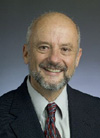 | Tuesday, May 2, 2006 |
|
Tuesday, May 2
Wednesday, May 3 Click here for links to descriptions of each event. |
|
Extended Forecast |
Secon Level 3 |
|
Tuesday, May 2 -Golden Broccoli & Cheese -Cheesy Greek Squeeze -Coconut Crusted Tilapia -Spaghetti with Meatballs -Toasted Almond Chicken Salad on Crossiant -Supreme Baked Pizza -Chicken Fajitas The Wilson Hall Cafe accepts Visa, Master Card, Discover and American Express. |
|
Wednesday, May 3 Lunch -Closed
Thursday, May 4
Chez Leon Menu |
| Fermilab Today is online at: http://www.fnal.gov/today/ Send comments and suggestions to today@fnal.gov Fermilab Today archive Fermilab Today PDF Version Fermilab Result of the Week archive Fermilab Safety Tip of the Week archive Linear Collider News archive Fermilab Today classifieds SuBscribe/UnsuBscribe to |
| Wanted: citizen scientists for ecology research at Fermilab |
|
Starting in May, the Fermilab Education Office will train ordinary citizens to do real ecology research. The Prairie Quadrat Program will allow adults, families and scouts to adopt a prairie plot and keep tabs on its development. Participants will learn how to map a prairie plot, identify prairie plants, and help Fermilab ecology experts track restoration progress--volunteers will even enter their data into a website scientists use to monitor the prairie's condition. "We are trying to restore the land back to its original condition before the settlers came," said Mary Hawthorne of the Education Office. "This program will train ordinary citizens to help us."
"Citizen scientists" may choose to document plants on their plot just once, a few times per season, or they may adopt their plot and track its progress for years to come. "It's pretty amazing to go back each year because new things are always coming up," said Hawthorne. The program will teach participants to understand the evolution of the prairie, and how it is changing based on the complex ecosystem studied within a single square meter of land.
Some of the free sessions will be geared toward groups of children and families, offering additional activities to keep children interested and occupied while parents "work their quad." A complete schedule of outings can be found on the education website. For more information, contact Nancy Lanning at x5588.
|
|
Chicago Sun-Times April 30, 2006: Fermilab in race to land scientific whopper West suburban Fermilab is stepping up its efforts to land one of the biggest and most expensive experiments in the history of science. Fermilab is competing with two sites in Europe and one in Japan for the International Linear Collider, a 28-mile-long machine that would cost $4 billion to $10 billion.
If built at Fermilab, the collider would be housed inside a 15-foot-wide tunnel more than 300 feet below the surface. Subatomic particles would race down from opposite ends of the tunnel and smash together in the middle.
|
| EPP2010 | ||
On April 26th, the report of the Committee on Elementary Particle Physics in the 21st Century (EPP2010)
The report lays out a strategic framework and set of recommendations for the future of the U.S. particle physics program that are both powerful and exciting. Included in the strategic framework is the vital role that Fermilab will play as the sole remaining U.S. laboratory entirely devoted to particle physics. The key objectives that are laid out for the future U.S. program are (a) to exploit fully the opportunities at the LHC, (b) to become a world-leading center for ILC R&D and to mount a compelling bid to host the ILC in the U.S. and (c) to expand the research in particle astrophysics and pursue neutrino physics in stages through an internationally coordinated program. While the specifics of the future particle physics program may change in time depending on the discoveries that we make, some of the strategic principles formulated by EPP2010 are at the core of any future program. In particular, the committee affirmed as the first principle the intrinsic value of elementary particle physics and identified the field as a key priority within the physical sciences. As a second principle it established that the US particle physics program should be characterized by a commitment to leadership within the global enterprise where leadership is carefully defined not to mean dominance but rather taking initiatives, catalyzing partnerships at home and abroad, and accepting risks to achieve the greatest scientific potential. These strategic principles for our field are likely to become a foundation for government public policy in support of the physical sciences thanks to the committee's careful work and its expertise across a broad spectrum of the sciences, industry and public policy. |
|
Budker Seminar Series
Batavia Road entrance to close for cars and bicycles
Lunchtime video: Chernobyl
Road Paving on D Road
Memorial Service for Ed Lober
Professional Development |


